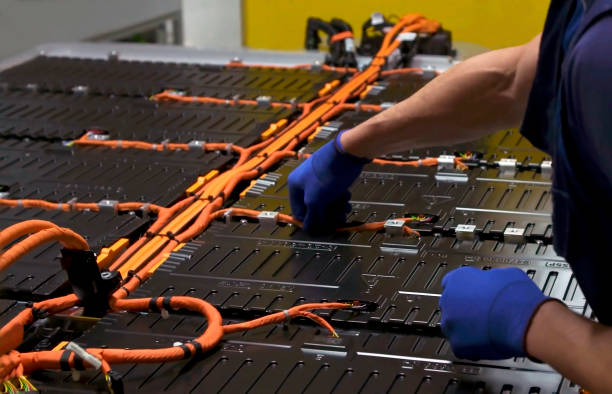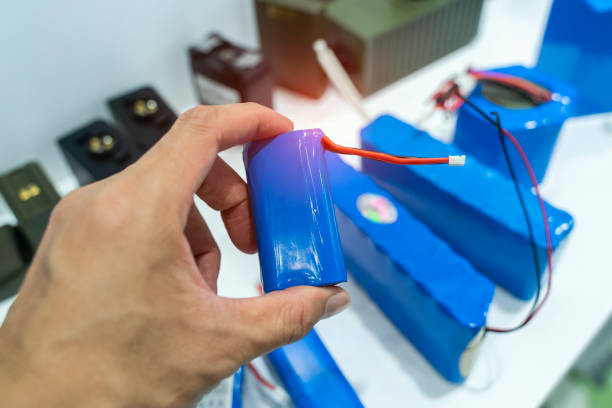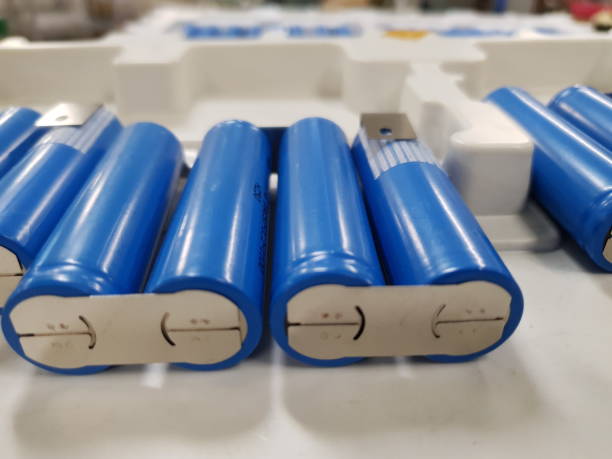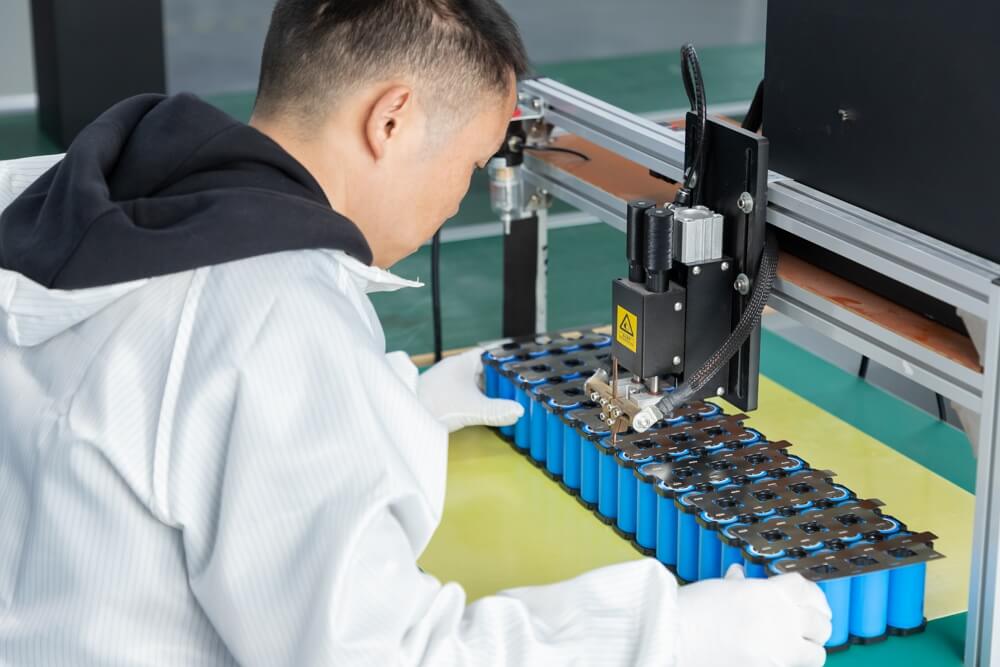Batteries are an integral part of our everyday lives and have gained application in various ways. They provide on-the-go power generation for several devices and engines. From the small disposable kinds found in alarms, wall clocks, and smoke detectors to the larger rechargeable ones found in scooters, trucks, and cars, batteries are regarded as an essential energy source.
With several battery types available and the continuous development of advanced smart devices, electric vehicles, and solar power, there is constant debate about which battery type provides optimal performance and power. One of the most common and recurring comparisons is the lead acid vs lithium ion battery debate. This article will look at the difference between lead acid and lithium ion batteries.

| Attribute | Lithium Battery | Lead Acid Battery |
|---|---|---|
| Energy Density | High | Low |
| Lifespan | Long | Short |
| Self-Discharge Rate | Low | High |
| Weight and Size | Lighter and More Compact | Large and Bulky |
| Cost | Relatively High | Relatively Low |
Click for a More Detailed Comparison: >> Lithium-Ion VS. Lead Acid Batteries
1. All-round Introduction to Lithium Ion Batteries
Since their emergence, lithium-ion batteries have been a game changer in power generation and have become increasingly popular due to their portable design, charging capacity, and high energy density. Thanks to these properties, lithium-ion batteries have gained mainstream adoption in many electronic devices such as mobile phones, tablets, and laptops. Also, it is used in the automotive industry for electric vehicles (EV) and rides, as well as in solar-powered devices.
1.1 What is Lithium Ion Battery and How Does It Work
Lithium-ion battery, also known as Li-ion battery, is a rechargeable battery that uses lithium ions to store energy. It comprises a positively charged electrode (cathode) and a negatively charged electrode (anode). Lithium ions move from the cathode to the anode during the charging process resulting in an electric current. The reverse process occurs during discharging.
The cathode is usually lithium based and controls the capacity and voltage of the battery. Generally, graphite acts as the material for the anode (Learn: Anode Materials for Lithium-ion Batteries). Between the cathode and anode is the electrolyte made up of lithium salt in an organic solvent.
The last component of the lithium ion battery is the separator, a physical barrier between the cathode and anode, which enables the movement of lithium ions through the cell while keeping electrons out. Lithium ions are produced at the cathode, and transported by the electrolyte, move through the separator to the anode, where they are stored during a battery charging process.
The working principle of lithium-ion batteries is straightforward. When lithium ion batteries are used to power appliances like golf carts or recreational vehicles (RV), the lithium ions move from the anode to the cathode via the electrolyte. This movement triggers the electrons causing them to travel from the cathode to the anode. The opposite of this chemical process occurs when the appliance is put to charge.
Lithium ion batteries are useful in many areas with top applications in surveillance systems, portable power packs, EVs and RVs, solar power storage systems, emergency power backups (UPS), and marine performance.
1.2 Pros of Lithium Ion Batteries
Lithium-ion batteries are the commonly used battery type for a host of benefits, some of which include:
- ● They are lighter than other batteries because their electrodes are made of lightweight materials.
- ● They have a long lifespan and can retain a charge for a long time.
- ● They have higher energy density when compared to other battery types like lead-acid batteries.
- ● They have a higher depth of discharge and can handle many charges and discharge cycles.
1.3 Cons of Lithium Ion Batteries
Some of the disadvantages of Li-ion batteries are:
- ● Compared to lead-acid batteries, they have a significantly higher cost.
- ● They have thermal runways meaning they are likely to catch on fire.
- ● High temperatures speed up the lifespan of these batteries, causing them to degrade faster.
- ● They cannot be carried on planes because they might produce heat levels that might lead to a fire, hence the regulatory bans on lithium-ion batteries.

1.4 Common Types of Lithium Batteries
Although electronic devices make use of lithium batteries, they do not all utilize the same type. This is because each device is only compatible with a certain battery type. There are several types of lithium batteries based on the materials used to make the electrodes and the chemical reactions taking place within the batteries.
- 1. Lithium Iron Phosphate (LFP) battery: LFP batteries use lithium iron phosphate (LiFePO4) as the cathode material and graphite as the anode. With good electrochemical performance, thermal stability, low resistance, and longer life cycle, LFPs are one of the safest lithium batteries available. They are used in large vehicles and the light EV industry.
- 2. Lithium Titanate (Li2TiO3 or LTO) battery: Lithium titanate batteries have a faster charge time compared to other lithium-ion batteries and a longer life cycle. They have applications in electric trains, industrial tools, and quick charging stations.
- 3. Lithium Manganese Oxide (LiMn2O4 or LMO) battery: Lithium manganese oxide batteries are thermally stable and safe so that they are widely used in medical devices and equipment, hybrids, electric vehicles, and power tools.
- 4. Lithium Cobalt Oxide (LiCoO2 or LCO) battery: This type of lithium battery can deliver power for considerable periods but does not perform well in high-load applications such as EVs. They perform better in portable electronics such as phones, cameras, tablets, and laptops.
- 5. Lithium Nickel Manganese Cobalt Oxide (NMC) battery: NMC batteries have a combination of cobalt, manganese, and nickel as the cathode material. The combined presence of these elements creates a stable chemistry with a high specific energy. NMCs are commonly used in electric vehicles.
- 6. Lithium Nickel Cobalt Aluminum Oxide (NCA) battery: With a long lifespan and high specific energy, NCA batteries can safely deliver enormous amounts of current for more extended periods. This is why they are the preferred battery option in producing electric vehicles.
2. Overall Introduction to Lead Acid Batteries
The lead-acid battery was the first commercially used rechargeable battery. Invented in 1859, it is still widely used for various purposes. Unlike lithium-ion batteries, the lead-acid battery is inexpensive and is generally considered a cheaper way to deliver bulk power.
2.1 What is Lead Acid Battery and How Does It Work
A lead-acid battery is a rechargeable battery that typically has porous lead as its negatively charged anode and its oxide (lead oxide) as its positive cathode. Both the cathode and anode are submerged in the electrolyte composed of an acidic solution of dilute sulfuric acid.
The immersion of the electrodes in the electrolyte causes a chemical reaction to occur. A chemical reaction takes place within the battery cell to release electric currents that flow through the electrodes.
Lead-acid batteries have applications in electric vehicles, jet skis, mobility scooters, emergency lighting, and several others.
2.2 Pros of Lead Acid Batteries
Lead acid batteries have some advantages, which are listed here:
- ● They are inexpensive. This accounts for its widespread availability in the market today.
- ● They have the lowest self-discharge rate among all rechargeable batteries.
- ● Lead acid batteries require little to no maintenance and can perform well in harsh conditions.
- ● They possess high specific power and can generate high discharge currents.
2.3 Cons of Lead Acid Batteries
The disadvantages of lead-acid batteries make them an unfavorable battery power source. The cons of lead acid batteries include the following:
- ● Lead acid batteries are usually bulkier compared to lithium-ion batteries of similar battery capacity.
- ● They have a limited cycle life and are more prone to reduced battery lifespan due to deeper discharges.
- ● They must be kept in charged condition to prevent sulfation of the battery.
- ● They have a slow charge time taking between 14 and 16 hours to attain full charge.
- ● They are not environmentally friendly, and not recycling them will exert a bad impact on the environment.

2.4 Common Types of Lead Acid Batteries
There are different types of lead-acid batteries that have been developed over the years. Read on to learn more about these batteries.
- 1. Flooded Lead Acid (FLA) battery: FLA models of lead acid batteries are widely used in the automotive industry. They are cost-effective and are the cheapest batteries on the market. Although modern FLA batteries have two variants (serviceable and maintenance-free), the traditional models require high maintenance, like cleaning the terminals, watering, and equalizing charges for long life.
- 2. Sealed Lead Acid (SLA) battery: Also known as Valve-Regulated Lead-Acid batteries (VLRA), this battery type has the electrolyte in a sealed container with a valve that releases gaseous build-up within the battery system. Unlike the FLA battery, these batteries have less electrolyte and do not degrade as quickly. SLA batteries are the safest type of lead-acid batteries.
Two common types of SLA batteries are the Absorbent Glass Mat (AGM) and the Gel. The AGM has a large capacity and comes in small packaging; it provides the highest efficiency and is useful in UPS and mobility vehicles. The Gel consists of a silica-based gel electrolyte; as a result of this property, they can be easily shipped.
3. Lithium-Ion VS. Lead Acid Batteries: A Comprehensive Comparison
When reviewing energy supply and power storage options, a popular question often asked is which battery is best to choose. The most common options are lead acid vs. lithium-ion battery technologies, which fast replace the traditional lead-acid battery.
In the following part, let us evaluate the features of lead battery vs lithium battery to see how they compare and contrast.
3.1 Safety
Lead-acid batteries release hydrogen and oxygen gases when overcharged. These gases are highly flammable and may cause a battery explosion or human poisoning in cases of improper ventilation. However, most of the lead-acid batteries available in the market are valve regulated, making them safe to use.
On the contrary, no harmful substances will be released during using lithium batteries. Lithium-ion batteries also pose a safety hazard due to thermal runaways. To avoid the Battery potential danger, many lithium battery manufacturers add Battery Management Systems (BMS) to their products, and the BMS will reduce failure risks and ensure the safety of the battery cell.
Each industry utilizing these batteries has rules guiding their manufacture to ensure they are safe to use. The most important thing is that both batteries are handled cautiously.

3.2 Cost
Cost-effectiveness is another factor that many people watch out for when getting batteries. This is the key difference between lead acid and lithium ion batteries. Lead-acid batteries are the cheaper option for battery installation. For a battery of the same size and capacity, a lithium ion battery usually costs two times the price of a similar lead-acid battery.
In terms of the longevity of these batteries, however, the Li-ion battery lasts much longer than the lead-acid battery. The lifetime value of a lithium-ion battery then becomes twice that of a lead-acid battery.
Therefore, lead-acid batteries are only the cheaper options for short-term, stationary applications where there are low energy requirements. In contrast, if you want to use batteries as a power source for a long time, lithium batteries are a more cost-effective option
3.3 Weight and Size
Nobody wants to have to walk around with bulky batteries. This is why many users prefer to have lightweight batteries that take up the least possible space available.
Lead-acid batteries contain lead, a highly dense material, while lithium ion batteries have lithium, a material that is 55% lighter than lead. The significant amounts of lead in lead-acid batteries make them weigh up to 5 times the weight of Li-ion batteries. In addition to this, Li-ion batteries have a higher energy density and do not need as much physical space as their lead-acid battery counterparts.
Consequently, lithium-ion batteries have a lower weight and size compared to lead-acid batteries.
3.4 Capacity
Battery capacity is a measure of the amount of energy that can be stored and eventually discharged in a battery per unit volume. A battery’s capacity directly shows how much active materials are contained inside that battery. Although the battery capacity may vary depending on the model and manufacturer, one thing remains the same: lithium-ion batteries have significantly higher energy density and battery capacity compared to lead-acid batteries.
You can store more energy in a lithium ion battery than in lead-acid batteries using the same space. Since Li-ion technology has higher energy storage capacity, you can power more appliances for considerable lengths of time and discharge more energy.
3.5 Charge and Discharge Characteristics
The depth of discharge (DOD) of a battery is the maximum energy contained in a fully charged battery that can be used before recharging the battery. It is a measure of how much you can safely drain the battery’s energy without doing any damage to the battery.
The depth of discharge of lithium battery vs lead acid battery is such that lead-acid batteries have 50% DOD, beyond which you risk affecting their lifespan negatively, while lithium ion batteries have a greater DOD of 80% or more. The higher depth of discharge of lithium ion batteries gives them a higher capacity for effective usage than their lead-acid battery counterparts.
In terms of charge time, lithium ion batteries take as little as a few minutes up to three hours to charge fully. A similarly sized lead-acid battery can take as much as 10 hours or more to reach full charge.
This factor is crucial for time-sensitive applications where there are fewer break intervals and high usage periods.
3.6 Lifespan
The cycle life of a battery is the number of charge cycles a battery can go through without reduced performance. This is known as one charge cycle when a battery is discharged (from powering appliances) and charged back up.
The lifespan of batteries is usually measured in terms of the number of charge cycles they can go through before expiration. You should know that the depth of discharge directly impacts the cycle life of a battery; deeper discharges cause more stress on the battery, thereby shortening the battery’s life cycle and making it less effective. All in all, a battery with long cycle life has greater longevity than one with short cycle life.
Typically, lead-acid batteries have a cycle life of about 300-500 cycles and can last for about one to two years. On the other hand, lithium ion batteries have much longer cycle lives. Polinovel’s LFP batteries are known for even greater lifespans with a cycle life of over 4000 cycles and can last for 10 years, with some high-end varieties having as much as 15+ service life.
3.7 Environmental Impact
Since your battery will not last forever, this leaves us with another important question: how does my lead acid vs lithium ion impact the environment?
Earlier in this article, we see that lead acid and lithium ion batteries have hazardous and highly toxic materials. Because of the long battery life of lithium ion batteries, they are replaced less often than lead-acid batteries.
Also, they are easily disposable, thus more environmentally friendly. Lead-acid batteries have two highly toxic materials, lead plates and acid, which cause severe environmental degradation. It costs a considerable amount of money and time to ensure that they are properly disposed of.
This makes lithium ion batteries a better choice for battery installation, putting them in high demand by electronics and electric vehicle manufacturers.
4. Differences Between Lead Acid and Lithium Ion Battery in Application
In terms of applications, we will examine how lead acid vs lithium ion batteries compare, which battery option is suitable for that application, and why it is the ideal choice for that situation.
4.1 Solar Battery
In recent times, there have been more concerns about the earth, and more people are choosing renewable energy sources in their homes and offices. As a result, solar panels are now more popular than ever before.
It would be best if you had a battery with high capacity to store the power generated by the solar panels for later use. A battery bank with several battery units serves this function well. Lithium-ion batteries have faster charge rates and higher depth of discharge than lead-acid batteries of the same size, thereby having higher efficiency in providing power for longer durations.

4.2 Electric Vehicle
Typically, the battery type required for use in electric vehicles, such as RVs and golf carts, is expected to have light weights with premium performance. With fast charging time and the ability to provide constant power throughout the discharge cycle, lithium ion batteries are the go-to choice.
In this regard, no other battery type comes close in the electric automobile industry. This makes lithium ion batteries the number 1 battery type in the EV market.
4.3 Electric Rides
Traveling with electric rides like the electric scooter and electric skateboard need not be complicated when you have lithium ion battery to bank on. The lithium-ion battery has four cells with each cell generating 3.2V. You can have four additional cell packs connected in parallel to provide you with more battery power.
This high energy density of lithium ion batteries means you can drive for more hours with your chosen electric ride without worrying. Another good thing about the lithium-ion battery for electric rides is that it can hold a charge for extended periods.
Lead-acid batteries lack these properties, making them a poor choice for use in electric rides.
5. Trustworthy Supplier of Lithium Batteries
Polinovel is a cutting-edge innovative company that designs, develops, manufactures, and sells lithium batteries in Shenzhen, China. With market applications in just about every field, Polinovel provides distributors and exporters with safe and reliable lithium battery solutions for residential and industrial usage.

We are committed to providing you with expert, safe, and durable lithium batteries that power various applications with excellent, long-lasting performance and the most usable energy possible.
At Polinovel, the primary value is placed on achieving long-term cooperation by providing customers with top-quality goods and services. When you partner with Polinovel, you get more than just safe and dependable batteries.
6. Conclusion
This comprehensive article on lithium-ion vs lead-acid batteries clearly shows that Li-ion batteries outperform lead-acid battery counterparts, making them very popular in everyday gadgets and appliances, such as mobile phones, electric cars, electric cars, electric scooters, and so much more. Li-ion batteries are better than other alternatives with higher performance, reliability, efficiency, and capacity.
When choosing lead-acid and lithium-ion batteries, especially for the abovementioned applications, Polinovel lithium batteries are your best bet to replace the traditional lead-acid variety. We provide high-quality batteries to meet your needs and properly help your customers. Contact Polinovel for professional advice if you are still trying to decide on the correct type of lithium battery to get.

